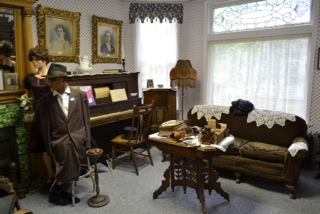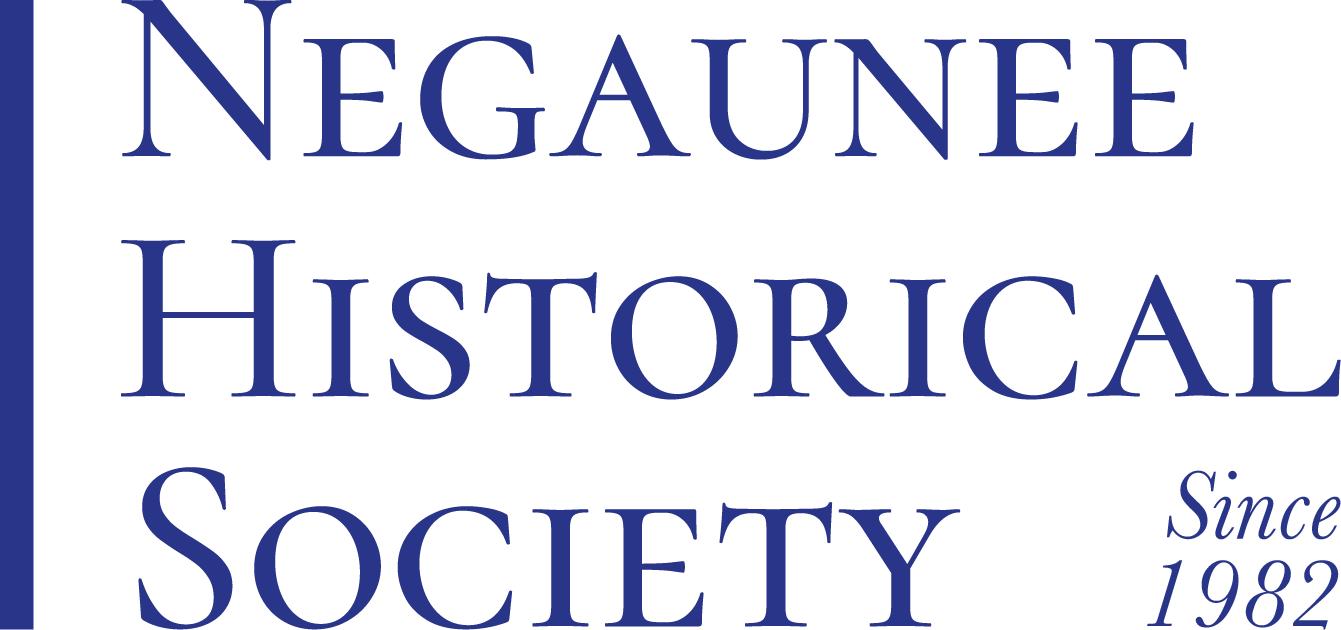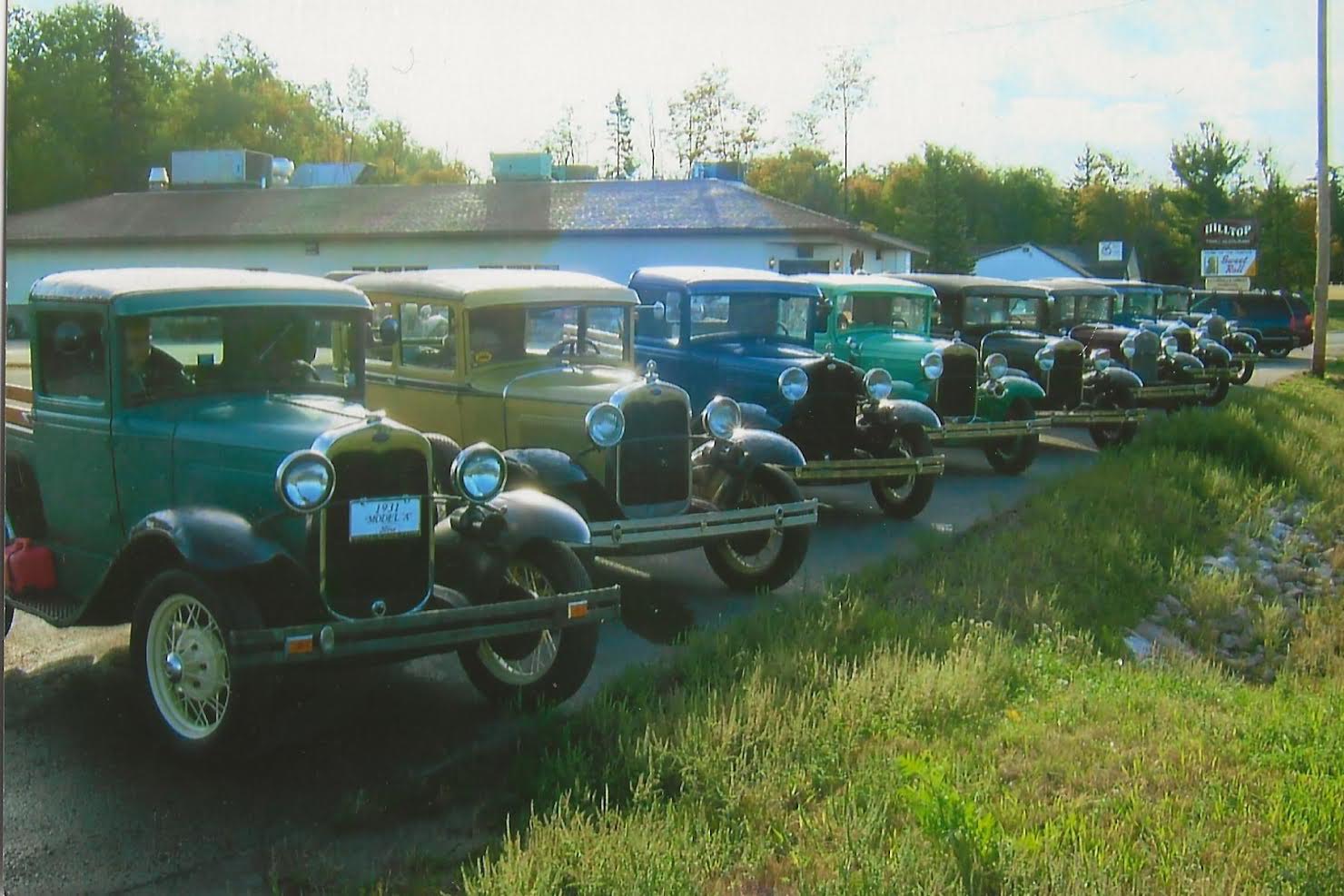Newsletter
From the President...
The museum board is back on its regular meeting schedule, 6 p.m. on the first Tuesday of each month. Meetings are held at the museum from May through November and are open to the public; you are most welcome to participate in the discussion.
Look for opportunities to volunteer and become a partner in preserving the history of Negaunee and the surrounding area.
- Open for the season from June 1 through Labor Day, 10 a.m. until 4 p.m., Monday through Saturday or by appointment.
- Ice Cream Social and Old Car Show: Pioneer Days July 6-8 p.m.
- Take advantage of the wealth of information, pictures and artifacts on display; you can be assured of learning something new about Negaunee and its colorful past.
There are many photo albums which portray the character of a strong mining community in its heyday. Give yourself an opportunity to open the door to your past!
See you at the museum.
— society president
LaFreniere’s: A Humble Beginning
Leo LaFreniere started out on a business venture selling Electrolux vacuum cleaners door-to-door across the Upper Peninsula.
In the mid 1940s, his son Don joined him. The father-son team would each take opposite sides of the street and have a contest to see who could make the most sales. Many years later, you could still hear Don saying, “There’s nothing like making a sale.”
Leo decided he should have a storefront, and his next business venture was selling vacuums and sewing machines. His wife Lena also joined the business, selling hats and knitting supplies in the front of the store.
Don entered the business world when he sold furniture for Tonella & Rupp in Ishpeming. He also delivered baked goods for Omar Bakery and sold them from his garage. In 1951, Don purchased John Rolando’s grocery at the corner of Tobin and Iron Streets, which became known as “Don’s Corner.”
In the next five years, Don formed a business partnership with his dad and they added televisions, appliances and furniture to the vacuums and sewing machines. This building was just up the street from Don’s Corner. On the entry door the sign read, “INQUIRE AT DON’S CORNER FOR ASSISTANCE.”
In 1971, LaFreniere’s Furniture store would have to be moved because of caving grounds. Surprisingly, this building would be making its second move. It had originally been built in 1901 at 330 Iron Street and was a clothing store owned by Joseph Lowenstein, known as “Cheap Joe’s.”
The building was moved to the 500 block of Iron Street to make room for the new Lowenstein Department store. After its move, it served as a grocery store and a plumbing shop.
When the building was moved to 342 Rail Street it was set on a hillside that gave ample space to construct a lower level. This now made it a five-showroom furniture palace.
There were five warehouses scattered about town. In 1992, Don sold the business to his son Lee, who had been an employee for 22 years.
Lee grew up with the business, even cutting most of the 55 cords of wood needed each year to heat the building during the tough times from 1979-1983. It was a family-run business with Lee’s son Wade and Don’s son-in-law Don Grisham as employees.
With Lee’s retirement, LaFreniere Furniture is no longer in business.
Don married Mary Reichel and they had nine children. Their son, Dale Kenneth, was six years old drowned in a mine pit located on the west end of Iron Street not far from the furniture store.
—Virginia Paulson
Negaunee’s basketball history rich with unusual claims
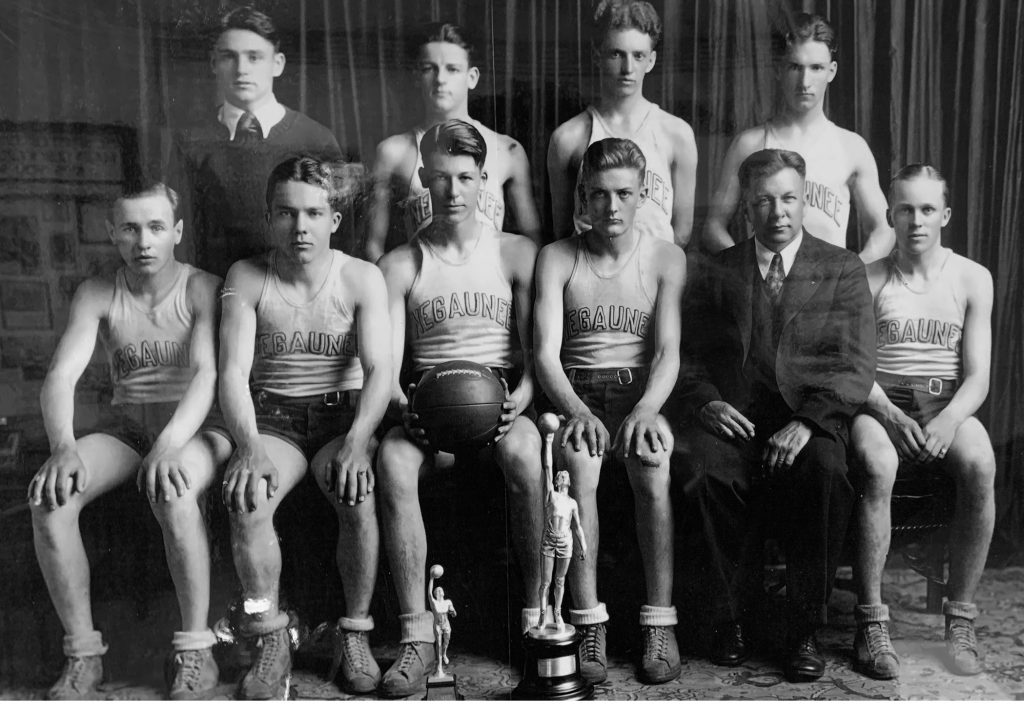
Negaunee’s early basketball history has many highlights.
In 1911, Negaunee ended its season against high school opponents undefeated. That year they lost their opener against Northern State Normal School (now NMU), 26-13.
As winners of the county championship, the Miners met Calumet in a post-season contest for the U.P. championship.
Negaunee was victorious, 37-32, for a U.P. title that was never officially recorded.
In 1919, Negaunee won its first official U.P. championship, defeating Houghton, 21-8. Entering into state tourney competition, they expected to play in Class B, which consisted of high schools with 400 or less students.
Because of an error, they were assigned to play in Class A. They beat Flint, 24-14, but lost to Holland 14-5 in the second game. This is believed to be the only time that a postseason game followed a state tournament game.
In 1920, Negaunee was again assigned to play in Class A and it was the only time a state game was decided on a forfeit.
Negaunee won the decision when Bay City failed to show up. They lost the second game to Battle Creek. In 1922, Negaunee was invited to participate in the National Scholastic Tournament at the University of Chicago.
In 1931, Negaunee won its first Class B State Championship. In 1942, NHS was the only school to win a district tournament under the “point system,” which was used by the MHSAA as a way of deciding a tie game, rather than going to overtime. At the end of regulation play, Negaunee and Ishpeming were tied at 22 points.
Each team had the same number of field goals and free throws. Negaunee had one less foul and the Miners were awarded one point for this accomplishment and were awarded the win.
—Virginia Paulson
At the Museum
The Sundberg building, which has been razed, was once home to the Negaunee Dress Factory and also a glove factory. The museum has been gifted with a pair of scissors from the dress factory and a sewing machine from the glove factory.
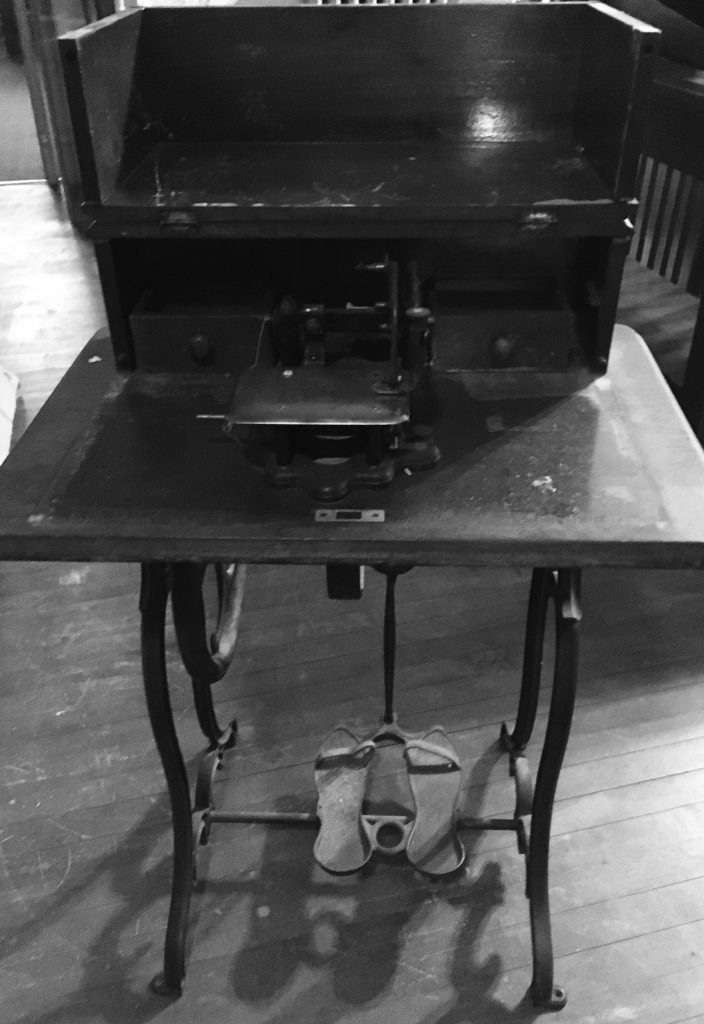
Negaunee News & Notes
Mary Luttinen, CPA, has opened her business on 208 Jackson Street. The building has been remodeled and a new modern facade has a stunning appearance. The building once served as a bakery and a hair salon.
You can now enjoy a cup of specialty coffee at Campfire Coffee, 320 Iron Street, which was Detroit & Northern Savings in the ’70s, but also home to OK Auto, Russo’s, Red Owl and Miller Bros in the past.
Get a mug of special brew of beer at U.P. Brewing Company, located in the new brewery, next to the former LaFreniere’s Furniture storefront. It once was a slaughter house for the Winter & Suess Meat Market and grocery store located on the corner of Iron and Silver Streets.
Negaunee has a new flower shop, Samara Floral Co., which is located at 415 Iron Street, the home of the former Teddy’s Central Florist. It is in the back of the current laundromat building.
History of society, museum building preserved
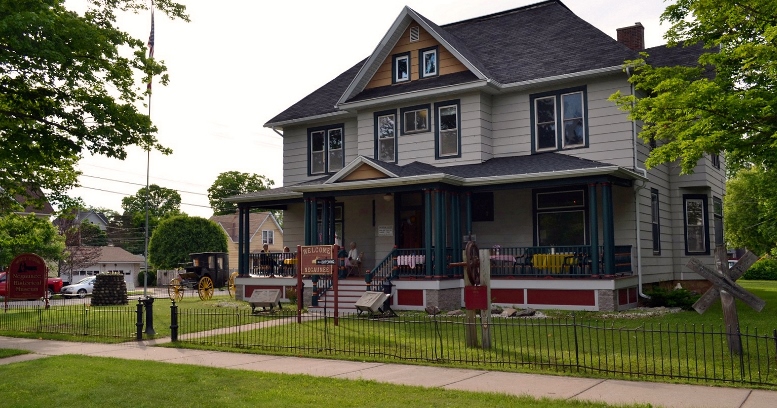
It was 1980 when Rose Collins initiated the idea of having a museum to commemorate Negaunee’s history, and a society was formed and artifacts were collected to be on display.
On June 24, 1984, the Negaunee Historical Museum opened its doors in a building that once served as the Finnish Apostolic Lutheran Church on Prince Street. This property was given to the members of the Apostolic Church by Samuel Collins, but was to revert back to him when it was no longer used for the purpose of religious services.
When the church moved to a new location, the deed to the property was given to the Negaunee Historical Society. It wasn’t long before this building ran out of space and it was apparent that a larger facility was needed.
At this time the American Legion was vacating the house on the corner of Brown Avenue and Main Street. In September 1989, the society entered into an agreement to purchase the American Legion clubrooms for $20,000. This became possible in June 1990 through a grant from the Detroit Institute of Arts, and presented to the society by State Representative Dominic Jacobetti.
The acquisition of this historic home, which was built for the Barabe family in 1905, gave the museum expanded rooms in which to display items. Its prime location is on the main route into town and easy access from highway US-41. Much of the home’s architectural details have been preserved, from its colonated porch to the etched glass windows, fireplaces with glazed tile, oak doors and staircase.
There are three floors of displays—a children’s area, Negaunee sports, medical and dental displays, mining, Native American, railroad and military displays, and much more. We have a resource room with the Negaunee Iron Herald, (a local newspaper for 90 years) school yearbooks dating from the 1900s, and a variety of picture albums.
Artifacts from the Palmer Cascade museum have also been added. The museum itself is located on a piece of history. In 1861, it was the original Catholic cemetery.
We give thanks to all the people, past and present, who have generously given their time to accomplish the mission of the society, “to preserve the history of Negaunee.” Ventures such as this help all of us learn, so that we can give future generations a history to be proud of.
The people who settled in Negaunee made it grow, and the museum has much to teach about Negaunee’s rich heritage. The museum is open from 10 a.m. to 4 p.m. Monday through Saturday, from June 1 to September 1.
—Virginia Paulson
A look back at Pioneer Days
Pioneer Days will be celebrated July 5th-12th, 2025, a celebration that has gone on for more than 40 years.
In July 1979, the City of Negaunee celebrated its centennial for the 100th graduating class of Negaunee High School.
According to the “History of Negaunee,” a pamphlet printed by Pellow Printing for Irontown U.S.A., the celebration was a “smashing success,” boasting more than 15,000 people in attendance at the fireworks and more than that at the parade.
Five hundred people went on bus tours of the mine areas, and there was a “jam-packed street dance” as well as a “Young People’s” dance at the armory and a city warehouse dance the same night. Because of that success, Irontown U.S.A. was formed.
“During the past year, it was frequently mentioned that was about time we had a celebration in Negaunee… when people come home, they don’t know what other people are in town or when they are visiting,” the pamphlet stated. “We intend to have an annual homecoming, a sort of mini celebration. The purpose will be to encourage alumni and friends who will be coming home to come during that week, and classes that plan on having reunions will be encouraged to have them during that week. … This overall week celebration will be called Pioneer Week.”
In September 1979, Irontown U.S.A. was listed at 102 Pioneer Avenue, and the No. 1 objective of the “ambitious new organization in town” was to preserve the city’s heritage for future generations.
Pioneer Days included class reunions, sidewalk sales, fishing derby, foot race and fireworks, “making it a week to be enjoyed by young and old alike.”
Pioneer Days 1980 was held June 6-13 and almost 400 members had joined the Irontown U.S.A. association to support the festival. The official 1980 line-up eventually included an ecumenical service at Lakeview Gym, and a quilt-making display and demo at the library.
—Kristy Basolo-Malmsten
